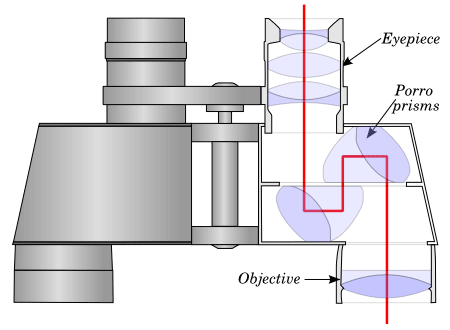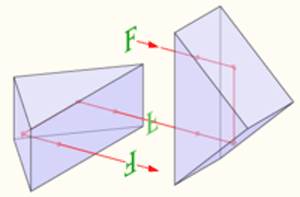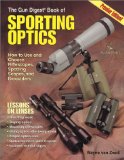Binoculars, Understanding Features & Specifications and Selecting the Right Pair
Whether you’re a nature enthusiast, recreationalist, hunter or just a full/part resident of the outdoors one essential piece of gear that is often overlook are a good set of binoculars. Choosing a set for general use can be a bit tricky as many people can only differentiate gross magnification and price as a gauge of quality. This can lead to some powerful, but ultimately, inadequate, gear choices as well as wasting a great deal of money. Here’s what you need to know and consider when purchasing binoculars.
Selecting Binoculars
Buying binoculars can be a baffling business. There are a great many models to choose from and in many price ranges. Binoculars with seemingly similar features can vary hundred dollars in price. And then there is the question of magnification and the diameter of the objective lens. Almost everyone knows that binoculars designated as 7X35 or 10X50 means that the binoculars rated as 7X will magnify seven times, while those rated at 10X will magnify ten times. The figures thirty-five and fifty are the diameters of the objective lenses in millimeters.
The best all-around binoculars for the outdoors are 7X35. Such a glass is easy to hold without undue hand tremor. It has good light-gathering abilities for forest use on dark days. It is an excellent choice for bird watching, hunting, and even for spectator sports.
Another good choice is 8X30. It offers a bit more magnification. but less light-gathering ability. It is suitable for big-game hunting and bird watching. Another popular glass is 9X35. This is a binocular for open country mountains and plains. It is not as easy to hold steady as a 7X35 and is best used when the viewer can sit down and brace his elbows against his upright knees to steady his hands.
Binoculars such as 10X50 are for long-range viewing, but they are too bulky and heavy if you have other gear to carry as well. For night use and for navigation, 7X50 are the best bet. These binoculars are also bulky and heavy, but they have tremendous light-gathering ability.
On the other hand, binoculars such as 6X25 are a little too small for general use. However, because of their small size and lightness they can be shoved into the pocket of a jacket and taken along when bulkier and heavier binoculars would be left behind.
 |
Features & Factors of Binoculars
Magnification
The magnification is one of the principal considerations in selecting binoculars. There is a tendency among inexperienced outdoorsmen to select binoculars with high magnification. The theory is that if it is higher in power, it has to be better. This is wrong. Binoculars of high power are difficult to hold steady; the tremors of your hand are magnified in proportion to the magnification of the binoculars. Binoculars of a moderate power – 7X or 8X – are the best all around choice. Although binoculars can be had with 16X or 20X magnification, these require tripods for satisfactory use. About the highest practical magnification for an outdoorsman is 10X.
Brightness
The relative brightness or the “ability to gather light” is another important feature to consider in binoculars. Although magnification plays a part in this, a bigger role is played by the diameter of the objective lens. Generally speaking, the wider the objective lens, the greater the relative brightness. However, magnification can negate the relative brightness. For example, binoculars of the specifications 10X50 and 7X50 have the same diameter-objective lens, but the 7X50 have higher relative brightness. Binoculars with very wide objective lenses are generally bulky and heavy and should not be selected where compactness and weight are important factors.
Field of View
The field of view is the width or diameter of the circular view that you see through the binoculars. It is always measured at a thousand yards. A wider field of view allows the viewer to take in more territory without moving the glasses. A wide field of view is an asset, particularly when viewing fast moving objects at close range. Again, the higher the magnification, the lower the field of view. There are binoculars on the market with extra-wide fields of view. These sell at higher prices than the same binoculars with standard fields of view.
Focusing
There are two different focusing systems in binoculars – central focusing and individual focusing. In binoculars with individual focusing, each eyepiece is focused individually according to a calibrated scale on it. With central focusing, both eyepieces are focused simultaneously by turning a knurled knob between the barrels. On most such binoculars, the right eyepiece has a scale for adjusting the visual difference between your two eyes. Very few people have the same vision in both eyes. The advantage of centrally focused binoculars is the ease and convenience of focusing. Most high quality binoculars manufactured today have central focusing. Individual-focus binoculars are fine if only one person is using them because the focus will not be changed. They are somewhat simpler in construction, hence they are less expensive.
Coating
On high quality binoculars, the lenses are always coated with magnesium fluoride on the air-to-glass surface. This coating eliminates reflections and glare and allows greater light transmission. Reflected light bounces off the prisms in the binoculars, reaching the eye as haze and making the image less sharp.
Alignment
The barrels of binoculars must be in perfect alignment, or your eyes won’t be able to make one image out of two. You can safely assume that any new pair of binoculars, when purchased, will be in perfect alignment. However, with cheap and flimsy binoculars, the alignment can change with use. When a change in alignment is only slight, your eyes can compensate for it, but using non-aligned binoculars will cause you eyestrain and headaches. The best protection against non-alignment lies in the reputation of the manufacturer and his guarantee. All high quality binoculars are sold with a guarantee of anywhere from five years to a lifetime.
Definition
The definition, the clarity and sharpness, of binoculars changes from the center to the edge of the viewing field. No binoculars have perfect center-to-edge definition. However, in binoculars with good optics, the edge definition has deteriorated to such a low point that it is almost unnoticeable. When purchasing binoculars, compare the edge definition in binoculars of different price brackets by focusing on a flat surface such as a wall.
Coloring
High quality binoculars are always corrected for colors most noticeable to the eyes. Look through binoculars at a dark object against a bright sky to see if you get rainbows or strong color fringes. These color fringes impair good definition.
Other Features
When purchasing good binoculars examine their general appearance. Make sure that the binoculars are well finished. See that the focusing mechanism and the hinges work smoothly. Look at the external covering on the barrels to ascertain that it is attached well. If you can afford only low-priced binoculars, shake them to see if any screws or prisms are loose inside. Look at the external parts to see how well they are cemented together. Give the objective lens a tap with your knuckle to make sure that it is mounted solidly. Going to be using them on lake or ocean? Consider bouyant versions or adding a floater. Read the manufacturer’s guarantee and compare it with the guarantees of competitive brands.
Binocular Brands & Manufacturers
Most high quality binoculars today are made in the United States, West Germany, and Japan. The only American manufacturer (nominally) is Bausch and Lomb. Their binoculars are expensive, but of outstanding quality. The 9X35 Bausch and Lomb binoculars are the choice of many knowledgeable mountain hunters. One can hardly go wrong in choosing binoculars by Bausch and Lomb.
Three outstanding German makes are Zeiss, Leitz, and Hensoldt. Zeiss lenses are world renowned and their binoculars are excellent. Zeiss makes a very fine 8X30 binocular crated entirely in rubber for maximum water resistance and protection against non-alignment if the binoculars are accidentally dropped. The rubber absorbs most of the shock.
 Leitz, the manufacturers of Leica cameras, make several models of roof prismatic binoculars. These Leitz Trinovid binoculars have their prisms arranged in a different way which makes them very slim and light. Indeed, Leitz binoculars are one-third to one-half lighter and one-quarter to one-third less bulky than binoculars with comparable magnification and objective lenses of the conventional Potro prism design. The Trinovids are made in 7X35, 8X32, and 10X40. The 10X40’s are smaller and lighter than conventional 7X35’s. The only hang up with these Leitz binoculars is their price – over several hundred dollars for their top of the line models. The other powers are a little less expensive.
Leitz, the manufacturers of Leica cameras, make several models of roof prismatic binoculars. These Leitz Trinovid binoculars have their prisms arranged in a different way which makes them very slim and light. Indeed, Leitz binoculars are one-third to one-half lighter and one-quarter to one-third less bulky than binoculars with comparable magnification and objective lenses of the conventional Potro prism design. The Trinovids are made in 7X35, 8X32, and 10X40. The 10X40’s are smaller and lighter than conventional 7X35’s. The only hang up with these Leitz binoculars is their price – over several hundred dollars for their top of the line models. The other powers are a little less expensive.
Excellent binoculars are made in Japan. Indeed, the Japanese have captured most of the low and medium priced binocular market. Such camera manufacturers as Pentax and Nikon both make good, medium priced binoculars. But perhaps the best known brand is Bushnell.
Bushnell glasses are excellent, and are made in many styles ranging from low to medium in price. I have used Bushnell binoculars in 7X35 and 6X25 with great satisfaction. Other Japanese manufacturers are Tasco and Swift. Low-priced Japanese-made binoculars can be had for fifty dollars, while the medium priced binoculars range from about one hundred to one hundred and fifty dollars.
Additional Research:
 |